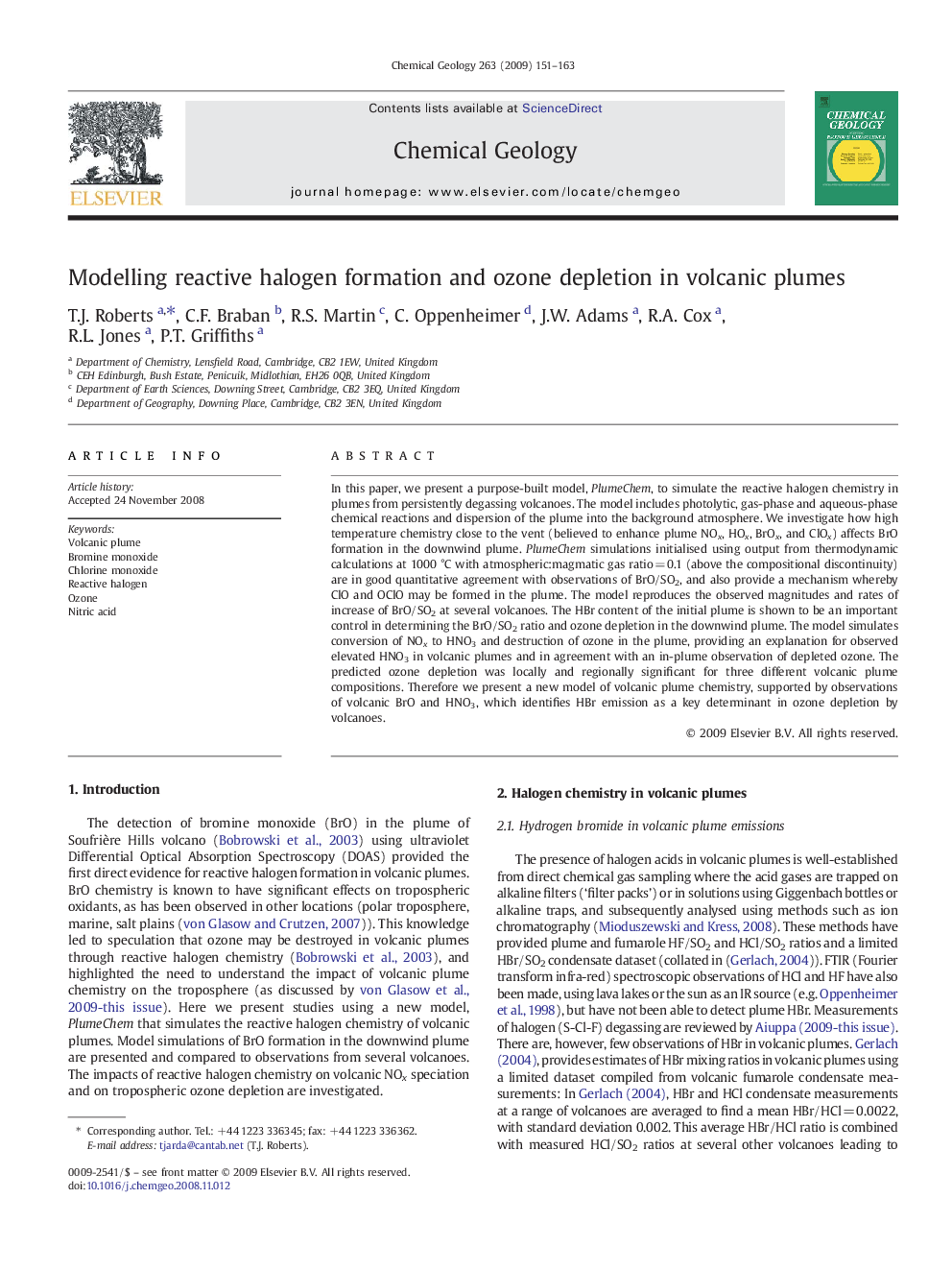| Article ID | Journal | Published Year | Pages | File Type |
|---|---|---|---|---|
| 4700254 | Chemical Geology | 2009 | 13 Pages |
In this paper, we present a purpose-built model, PlumeChem, to simulate the reactive halogen chemistry in plumes from persistently degassing volcanoes. The model includes photolytic, gas-phase and aqueous-phase chemical reactions and dispersion of the plume into the background atmosphere. We investigate how high temperature chemistry close to the vent (believed to enhance plume NOx, HOx, BrOx, and ClOx) affects BrO formation in the downwind plume. PlumeChem simulations initialised using output from thermodynamic calculations at 1000 °C with atmospheric:magmatic gas ratio = 0.1 (above the compositional discontinuity) are in good quantitative agreement with observations of BrO/SO2, and also provide a mechanism whereby ClO and OClO may be formed in the plume. The model reproduces the observed magnitudes and rates of increase of BrO/SO2 at several volcanoes. The HBr content of the initial plume is shown to be an important control in determining the BrO/SO2 ratio and ozone depletion in the downwind plume. The model simulates conversion of NOx to HNO3 and destruction of ozone in the plume, providing an explanation for observed elevated HNO3 in volcanic plumes and in agreement with an in-plume observation of depleted ozone. The predicted ozone depletion was locally and regionally significant for three different volcanic plume compositions. Therefore we present a new model of volcanic plume chemistry, supported by observations of volcanic BrO and HNO3, which identifies HBr emission as a key determinant in ozone depletion by volcanoes.
